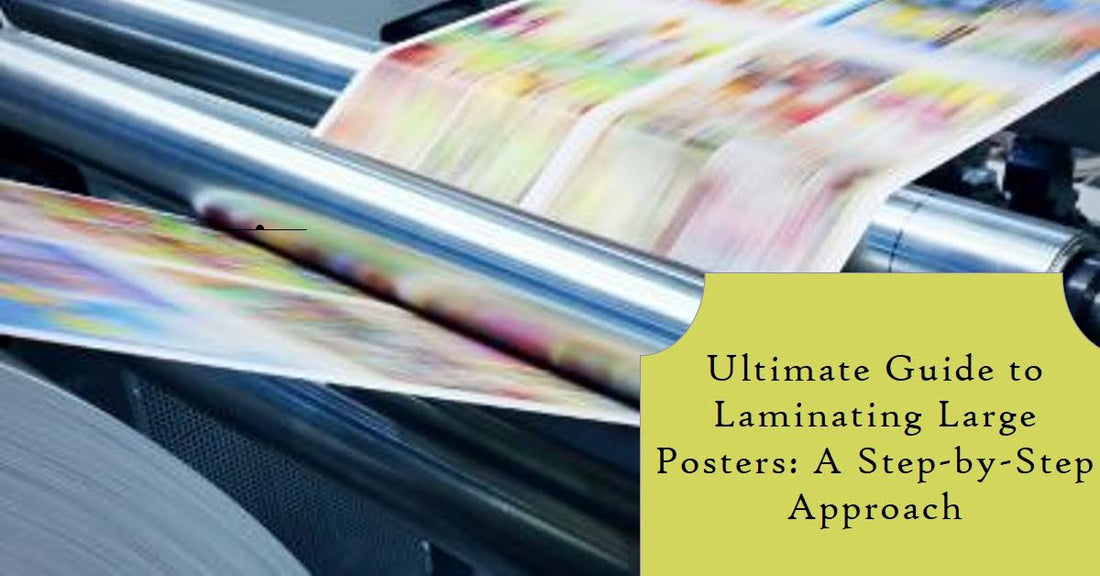Laminating large posters isn't just about preserving their visual appeal; it's an art of protection and enhancement. Whether you're a business owner showcasing promotional material, a teacher safeguarding educational posters, or someone looking to preserve a cherished memory, understanding how to laminate large posters is essential. In this blog, we'll walk you through the entire process.
Understanding Lamination:
Lamination involves covering a unique vintage ski poster with a protective plastic layer, which guards against fading, tears, and water damage. This process not only extends the life of your poster but also enhances its colors and details.
How to Laminate Large Posters

Materials Needed:
- Large Poster
- Lamination Machine (or Lamination Service)
- Lamination Pouches/Film
- Clean, Flat Surface
- Alignment Tools (Ruler, T-Square)
- Scissors or a Trimmer
Step 1: Choosing the Right Lamination Type

There are two primary types of lamination: hot and cold. Hot lamination uses heat to seal the plastic film, making it ideal for most paper types. Cold lamination, on the other hand, is perfect for heat-sensitive materials.
Step 2: Preparing Your Poster

Before you start, ensure your poster is clean and free from dust. Any dirt or particles will become permanently trapped once laminated.
Step 3: Selecting the Right Size Lamination Pouch

Choose a lamination pouch that's slightly larger than your poster. This ensures complete coverage and a sealed edge around the poster.
Step 4: The Lamination Process

- Preheat your laminator.
- Place your poster inside the lamination pouch, aligning it carefully.
- Feed the pouch into the laminator, sealing the edge first.
For cold lamination:
- Align your poster within the pouch.
- Use a hand roller or a cold lamination machine to seal the pouch.
Step 5: Sealing and Cooling

Once laminated, let your poster cool down before trimming the edges. This ensures a smooth, sealed edge.
Step 6: Trimming the Edges
Use scissors or a trimmer to cut the excess lamination film, leaving a small border around the poster for a neat finish.
Tips for Successful Lamination
Avoid Air Bubbles: Ensure there are no air bubbles when placing the poster inside the pouch. Air bubbles can ruin the look and longevity of the lamination.
Quality Matters: Invest in a good-quality laminator and pouches. Poor-quality materials can lead to poor lamination results.
Temperature Settings: Be mindful of the temperature settings on your laminator. Too hot, and you risk damaging the poster; too cold, and the lamination won’t seal properly.
Professional Services: If you're unsure about doing it yourself or don't have the right equipment, consider using a professional lamination service.
Final Thoughts
Laminating large posters is a straightforward process that can significantly extend the life and enhance the appearance of your posters. Whether you’re doing it yourself or seeking professional help, the key lies in careful preparation and execution. With these steps and tips in mind, you’re well on your way to beautifully laminated posters that stand the test of time.
FAQs:
Can I laminate a poster printed on inkjet paper?
Yes, but use a cold lamination process to prevent the ink from smudging. How long does lamination last?
High-quality lamination can last for several years, depending on the conditions it's exposed to.
Can laminated posters be recycled?
It's challenging due to the mixed materials (paper and plastic), but check with the local recycling guidelines.
Is it possible to remove lamination?
Removing lamination is difficult and often results in damage to the poster.
Can I laminate a poster with wrinkles or folds?
It's best to smooth out any wrinkles or folds before lamination to ensure a flat, even finish.
Also read: Visual Harmony and Exploration of Morgan Wallen Posters

